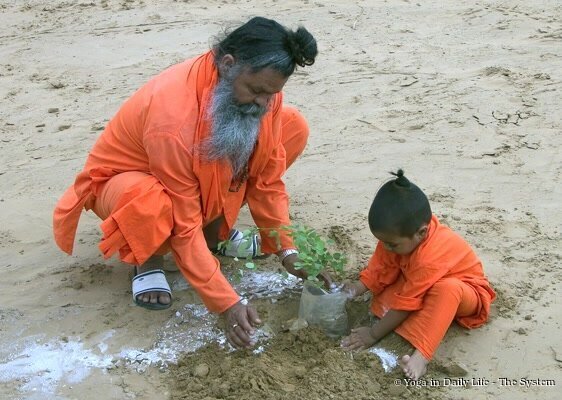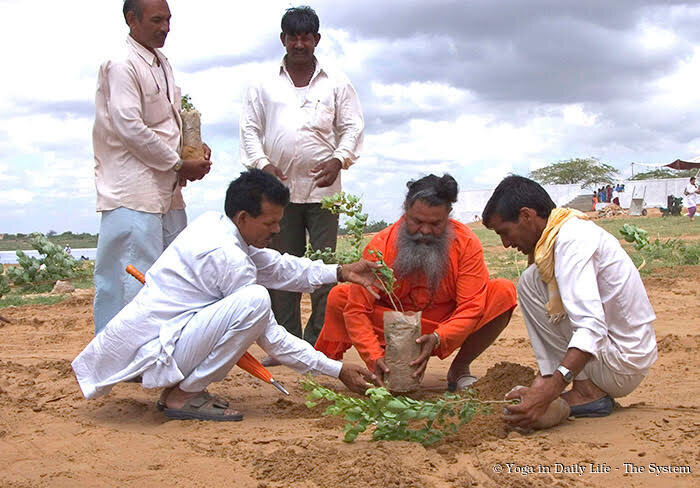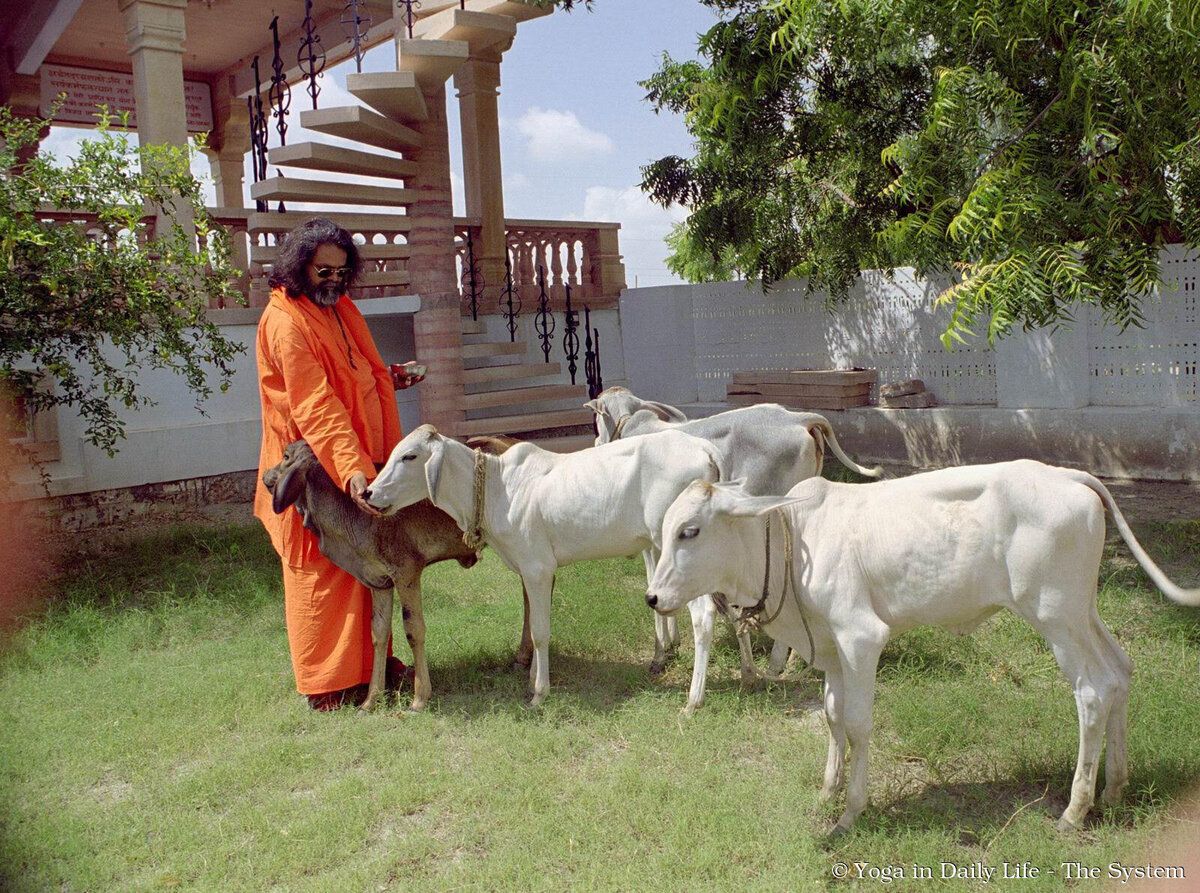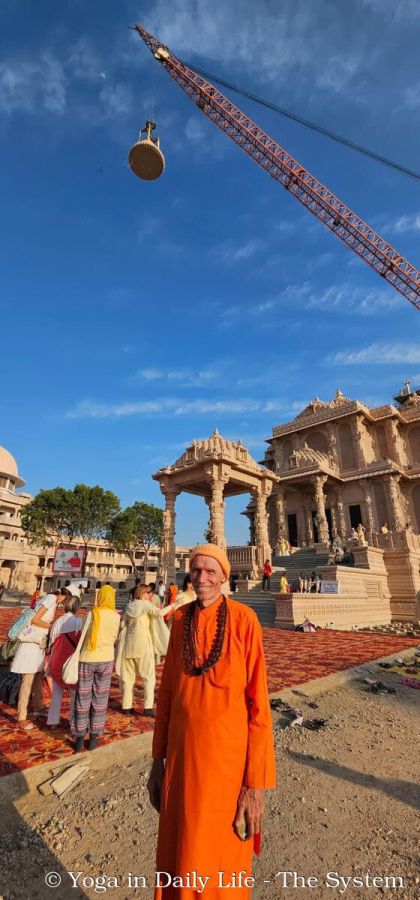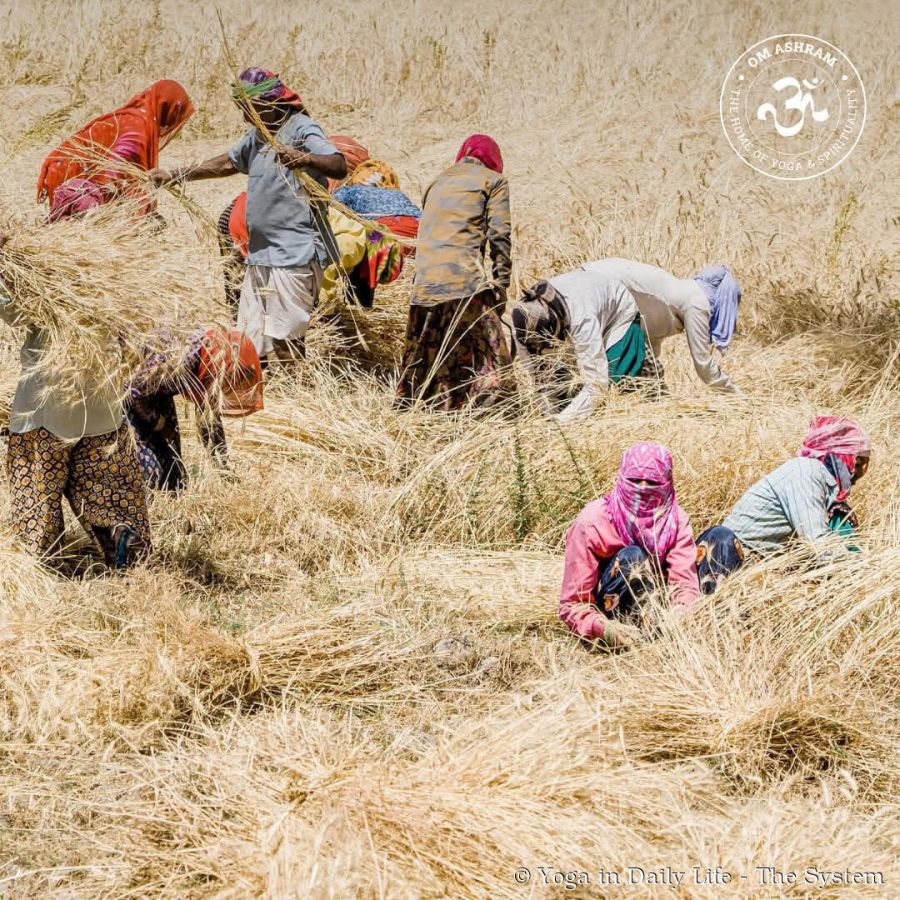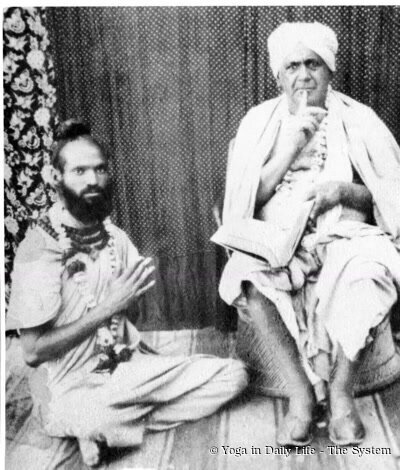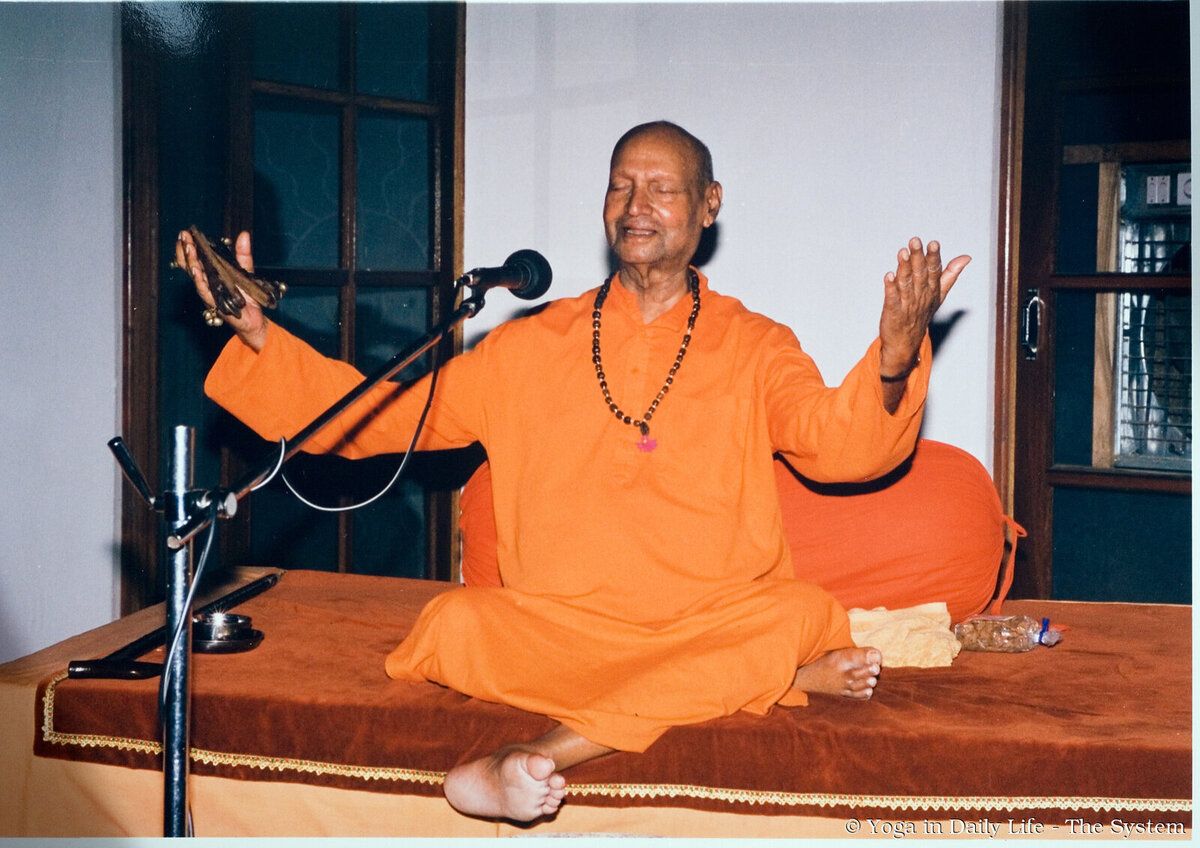Karma Yoga – the Path of Selfless Action
Introduction
Karma Yoga is the path of selfless action and service, distinct from ordinary work by the intention that guides it. Unlike actions motivated by personal gain, recognition or reward, Karma Yoga calls upon the practitioner to dedicate all efforts to the Divine – acting with detachment from outcomes.
This conscious surrender transforms daily duties into spiritual practice, where emphasis shifts from results to the purity of intention. Through such discipline, the individual gradually transcends ego-driven motives, cultivating humility and aligning every action with a higher, divine purpose.
His Holiness Hindu Dharmsamrat Paramhans Sri Swami Madhavanandaji, Holy Guruji, often taught:
"Sevā dharma hi mahān dharma hai – Service is the highest principle, the highest duty."
Likewise, in Yoga in Daily Life, The System, Vishwaguru Mahamandaleshwar Paramhans Sri Swami Maheshwarananda Puri, Vishwaguruji, writes:
“Karma Yoga is the path of action. It deals with the law of cause and effect. The outcome of an action depends on its ethical value and the intention with which it was performed. Being selfless leads us beyond the limits of our little ego to the unity of all beings. To offer understanding, forgiveness, and help are selfless actions that liberate us from the cycle of karma.”
The Principle and Practice of Selfless Action
Everything we experience in life is the fruit of past actions – light and shadow intertwined. Karma Yoga offers a path to freedom from this endless cycle. By releasing attachment to the fruits of our deeds and surrendering all outcomes to a higher power, we step off the restless wheel of cause and effect.
The Law of Karma is eternal and precise: every action invites a corresponding reaction, not only in the physical realm but also in the subtle dimensions of mind and spirit. Karma Yoga teaches mindful detachment – to act with full awareness yet without expectation.
On this path of selfless action, spiritual practice blossoms. It dissolves ego, uproots pride, purifies the antahkarana (the inner instrument of perception), and cleanses subtle karmic impressions that bind the soul.
In The Hidden Power in Humans, Chakras and Kundalini, Vishwaguruji explains:
“When we plant an apple seed in the earth, naturally, an apple tree grows. In the same way, the seeds of our actions produce corresponding effects. The Law of Karma says that the energetic vibration arising from each action will return to the one who created it, either with the same qualities or even stronger through other intervening interactions.”
An Example of Selfless Service
In Līlā Amrit, a story illustrates this spirit of devotion: Holy Guruji tirelessly served in the ashram of Sri Mahaprabhuji; cleaning rooms, preparing baths, collecting firewood, begging for alms, sweeping ashram grounds, massaging Mahaprabhuji’s feet, and writing letters; sleeping barely two hours each night. At times, he felt weary and frustrated, yet later realised these moments were expressions of divine play (līlā) and the guru’s grace (kripā).
One day, Sri Mahaprabhuji offered Holy Guruji any boon, even rulership over the three worlds. Holy Guruji humbly bowed and said:
“Grant me only the privilege of serving You in every lifetime.”
Mahaprabhuji smiled and replied, “You could have asked for more.”
Guruji later reflected that no siddhi (supernatural power) nor moksha (liberation) could compare to the joy of serving the guru. When Sri Mahaprabhuji left his body, Holy Guruji nearly succumbed to grief, but then remembered the teaching:
“Serving all is serving Me.”
Thus, he vowed to spread Sri Mahaprabhuji’s message throughout the world.
The Two Types of Karma Yoga
1. Sakam Karma – Selfish Action
Sakam Karma refers to actions performed with expectation, done for personal gain or benefit. Such work binds the doer to karmic consequences, requiring repayment in this life or a future birth. Even “good” karma, when performed with attachment, creates bondage, whether it be iron or gold chains.
2. Nishkām Karma – Selfless Action
Nishkām Karma is action free from desire. Derived from kāma (desire) and kriyā (action), it represents the purest form of giving, performed with love, devotion and joy, expecting nothing in return. True seva (service) is offered wholeheartedly, without anticipating gratitude.
As Vishwaguruji beautifully expressed:
“The Karma Yogis in our ashram work with immense love. They clean gardens, tend vegetables, cook in the kitchen, and wash the corridors many times a day. Even when others walk through with shoes, they purify the space again before meditation. Such dedication comes only from the heart, a love for seva that cannot be imitated. Without this love, such service is impossible. These Karma Yogis gain greater spiritual benefit than those performing even intense austerities. Yoga flourishes through karma; without action, there is no progress. Serving in an ashram holds indescribable merit.”
The Essence of Karma Yoga
The four paths of Yoga:
- Jñāna Yoga – philosophical path
- Bhakti Yoga – path of devotion
- Rāja Yoga – path of self-discipline
- Karma Yoga – path of action
They are inseparable threads of one spiritual fabric. Like the limbs of a body, each supports the whole; without one, the balance is lost.
Sevā, the art of selfless service, transcends personal desire. To serve not only those we love but also strangers and even adversaries is the essence of Karma Yoga. Without the warmth of bhakti (devotion), service becomes hollow; it is love that breathes life into selflessness.
This journey is both simple and profound. As the sages say:
“It is easier than you think, and harder than you imagine.”
Through steady practice, patience and divine grace, the light of consciousness awakens within.
Among all yogic paths, Karma Yoga stands as the most accessible. By offering our highest effort in service, through body, mind or spirit, we purify the heart and approach liberation. Each soul has unique gifts, and seva manifests through these talents: as social, educational, environmental or spiritual contribution. The ultimate aim remains moksha – freedom or liberation from the cycle of birth and death.
Holy Guruji once illustrated this with a scale:
“On one side rests moksha, on the other seva. Seva outweighs moksha.”
Even the Divine descends from the realm of liberation to serve the world.
